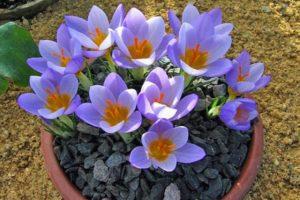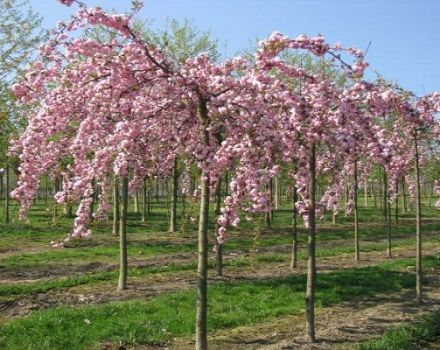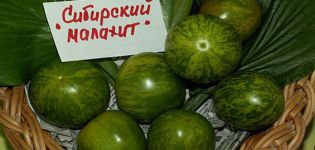Description of types and features Kupen, planting and care in the open field
Kupena is an attractive garden plant similar to a lily of the valley. It is unpretentious, planting and caring for a bath in the open field is within the power of even a novice gardener. In addition to decorativeness, it also has healing properties, and herbalists use it to prepare medicinal infusions and decoctions. Thanks to these qualities, the plant has become a favorite of many gardeners.
Description and features
The distribution area of the kupena is the Far East, Siberia, the Caucasus. In the Moscow region, in meadows and slopes, the plant is also found, but to a much lesser extent. Outwardly, Kupena is very similar to lily of the valley, which is not surprising - these are related plants.
The leaves of the bushes are oblong, with clearly visible longitudinal veins. Small flowers of white or cream color are bell-shaped. The edges of the buds are painted in a light green color. Flowering begins in late spring and lasts for a month. The people gave the plant several names: garden lily of the valley, Solomon's seal, wolf grass, raven berries.
Growing
To grow a kupin at home, you need to know and fulfill its requirements.
Seat selection
Kupena will best develop in shade or partial shade. The sun's bright rays of the sun negatively affect the plant. The flower does not tolerate stagnant water, so it is not planted on wet soils.
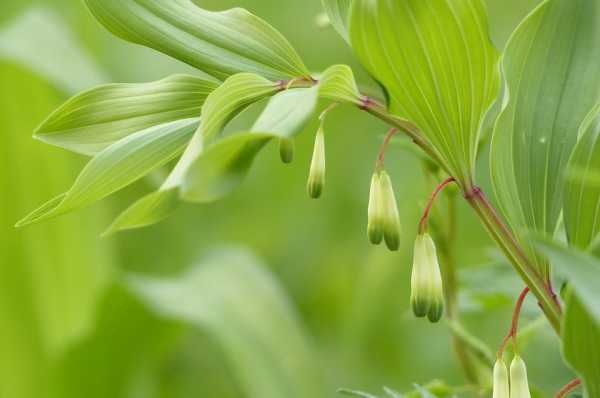
Soil requirements
Kupena is undemanding to the composition of the soil, but still it will grow better on a fertile one. Before planting the bushes, drainage must be laid out in the planting pits to protect the rhizomes from flooding in a rainy summer. Kupena develops well under the canopy of trees, forming large clumps.
Timing
The planting period is bought in open ground - spring or autumn. But it is easier for a garden lily of the valley to transfer a transplant in late August or early September. The plant will have time to take root before the onset of cold weather, and will not freeze in a frosty winter.
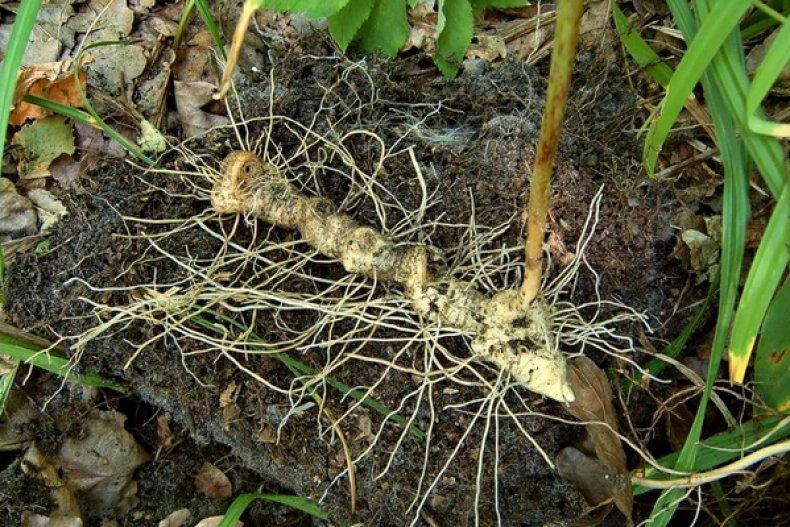
Landing scheme
Kupena multiplies quickly with the help of rhizomes, so you do not need to plant it densely. Landing is done as follows:
- a site is dug to a depth of 20-25 centimeters;
- holes are formed at a distance of 20 centimeters from one another;
- drainage is laid at the bottom of the planting holes;
- bushes are planted to a depth of 8 centimeters.
Note! Kupena is a poisonous plant, so wash your hands thoroughly after working with it.
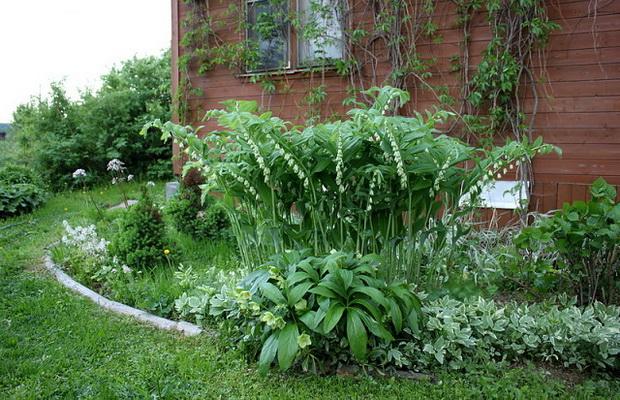
Reproduction
You can breed a garden lily of the valley on a site in 2 ways: by seeds and by dividing rhizomes. The first method is laborious, and is usually not used by gardeners.
Division of rhizomes
With the vegetative method, the bushes selected for transplantation are pre-dug. In this case, the separation of the rhizomes from the mother plant occurs. The plants are dug up and transplanted to a new location. The kupena will bloom in 2 years.
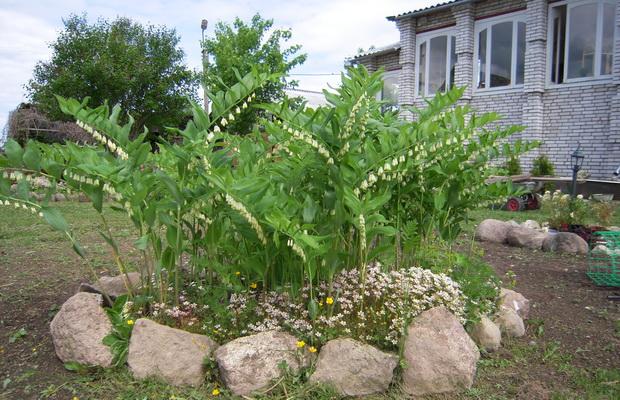
Seeds
This method is not very common among gardeners, since the garden lily of the valley will have to wait for 5 years to bloom. In addition, long-proboscis bumblebees are required for pollination of flowers (with the exception of broad-leaved kupena). If, nevertheless, this method of reproduction is chosen, then the seeds must first be kept in the refrigerator for 2 months, then planted in a planting box.
Care
Kupena is an unpretentious plant, so caring for it is easy. In a dry summer, you need to moisten the soil, mulch it to retain moisture, in the first years of the plant's life, fight weeds, and sometimes feed it.
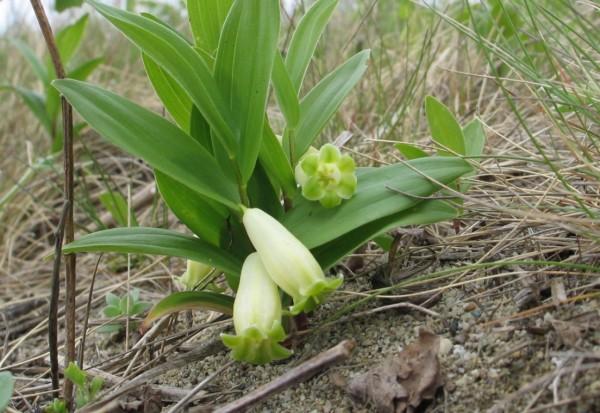
Watering
It is necessary to water the bath carefully, since it does not like excessive moisture: under these conditions, it is attacked by slugs, snails, and rot forms on the roots. If the summer is rainy, there will be enough rainfall for it. It is necessary to irrigate the garden lily of the valley only in dry summers.
Mulching
Usually, after watering, the plants are loosened to prevent crust formation. But in the case of a kupena, this does not need to be done: it has rhizomes close to the soil surface, and loosening them can be damaged. Instead, the bushes are mulched with tree bark, sawdust or peat.
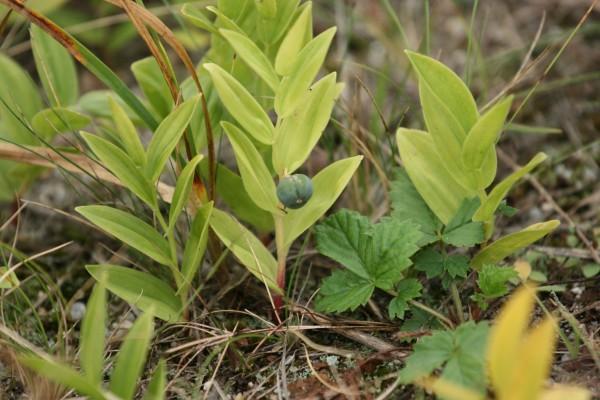
Weed control
In the first 2 years of life, the kupen needs to get rid of the weeds growing around it. Young bushes are not able to resist tall weeds. In the future, the garden lily of the valley forms a dense curtain, and he himself is able to hammer other plants.
Top dressing
Kupena does not make great demands on soil fertility, but if it is planted in depleted soil, additional fertilizing will be required. For this, a complex mineral composition is used, which is applied in the spring, when the plants hatch, and again when they bloom.
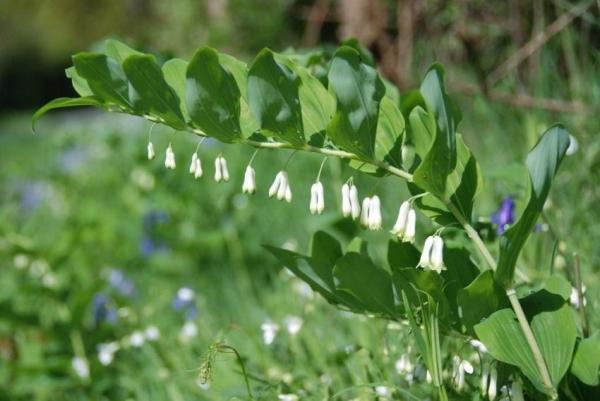
Diseases and pests
Garden lily of the valley is rarely exposed to diseases and pests. However, due to waterlogging of the soil, slugs can attack the kupen, due to the activity of which the plant loses its decorative appearance. To get rid of pests from the site, they are collected by hand, and they also sprinkle the soil with ash and eggshells.
Preparing for winter
For the winter, the ground part of the kupena dies off, and the underground part safely waits out the frost. To prevent the leaves from serving as carriers of diseases, they can be cut off in the fall.
If the plantings are grown in the northern regions, they will require additional shelter.
To do this, sprinkle the ground with peat, sawdust, dry leaves.
Transfer
Kupena grows strongly, forming a dense curtain. The bushes are beginning to lack space for nutrition and development. In this case, the plants need to be replanted. To do this, a bush is dug out with at least one bud on the rhizome, transplanted to another place, and watered.
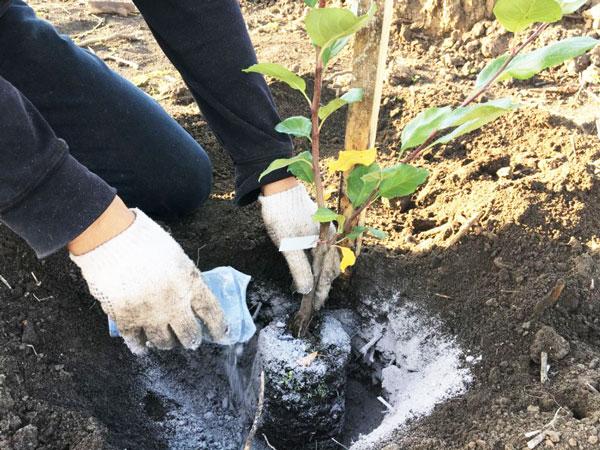
Pruning
After flowering, the kupene does not need to trim the leaves: further development of the root system passes through them. If the gardener does not need seeds for propagation, then the peduncles must be removed. This should be done for the reason that setting the seed takes a lot of energy from the plant.
Additional Information. Due to the rounded depressed scars on the rhizome, the plant is called the Solomon's seal.
Kinds
In nature, there are about 50 types of kupena. Further about the most popular ones.
Pharmacy
It is also called medicinal or scented. The pharmacy purchase produces a stem that is slightly bent to one side. Its height is 30-40 centimeters, oblong leaves are located along the entire length.The buds are colored white or light pink. All parts of the plant are considered medicinal, and are actively used in folk medicine.
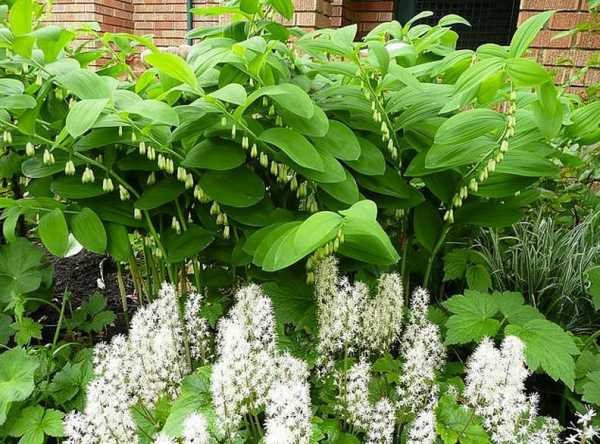
Whorled
In height, the whorled kupin reaches 30-60 centimeters. The plant got its name for the leaves, which are collected in whorls of 4-8 pieces. The narrow elongated leaves are colored with a green palette, the buds are white.
Multi-flowered
This is a tall type of garden lily of the valley: it reaches a height of 1 meter. The buds are collected in bunches of 3-4 pieces. Snow-white flowers hanging from the leaf sinuses are attached to thin legs.
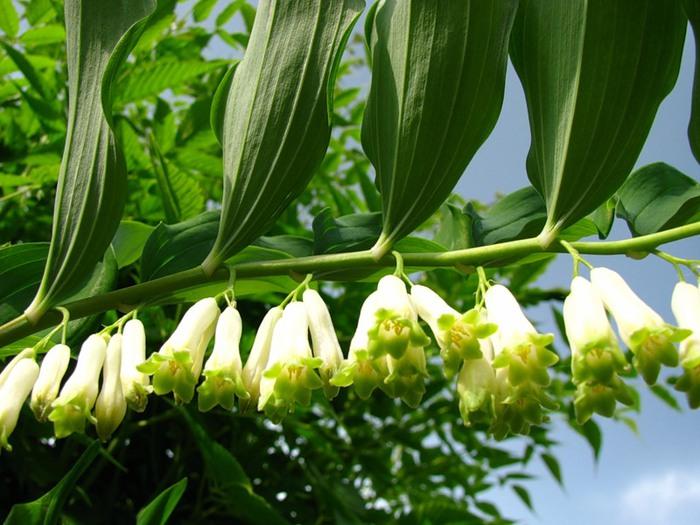
Broadleaf
The bushes of this type of garden lily of the valley are medium-sized: their height reaches 50 centimeters. The leaves are oval, the buds are white. The planting blooms in late spring.
Squat
Unlike other species, the stem of the kupena is squat straight. The bush grows no higher than 35 centimeters. Its leaves are green ovoid, the flowers are white.
Hooker
This is a dwarf plant species. Its height barely reaches 10 centimeters. The leaf plates are oblong, the buds acquire a lilac-lilac hue during growth.

Pratty
One of the decorative types of garden lily of the valley. Its stems are colored purple, the leaves are green with a touch of silver. Lilac flowers are collected in a brush.
Use in landscape design
Kupena is suitable for use in shady areas of the garden. It can cover the base of trees and shrubs. It will be a mutually beneficial symbiosis: the crown of the plantations will protect the garden lily of the valley from the scorching sun, and it, in turn, will cover the unsightly tree-trunk circles.
In addition, the kupena can be used in rockeries, planting it behind low-growing plants: daisies, tenacious, pansies. It will serve as a background for irises, daylilies, garden geraniums. It will be good to combine with the same shade-loving plantings, like itself: hosta, ferns, dicentra, primroses, heychera.
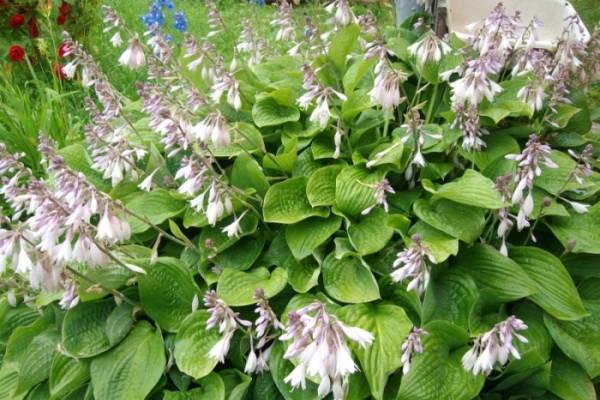
Florists use garden lily of the valley for bouquets and flower arrangements. It can also be used for forcing. For this, pieces of rhizomes are planted in pots and kept in a warm room.
Like a medicinal plant
In folk medicine, all parts of the plant are used to prepare infusions, decoctions, compresses. It can relieve pain, stop bleeding, heal inflammation. Below are a few recipes recommended by herbalists for treating diseases.
Alcohol tincture
To prepare it you will need:
- 70 grams of plant leaves;
- 100 grams of 70% alcohol.
Grind the grass, fill it with alcohol, stand for 10 days in a dark room, then strain. The medicine is taken three times a day, 10 drops. Helps with bleeding, ulcers, impotence.

Broth for wound healing
The remedy is prepared as follows:
- chop 2-3 tablespoons of roots;
- pour them with 0.5 liters of water;
- cook for 20 minutes over low heat.
The broth is used only for lotions and compresses. The remedy heals bleeding wounds, removes bruises and bruises.
Anesthetic decoction
For cooking, you will need the following components:

- 5 grams of garden lily of the valley root;
- 1 cup boiling water
The ingredients are mixed in a saucepan, which is put on low heat for 20 minutes. It is used to relieve the condition in the form of a compress.
Important! Before using purchased as medicines, you need to consult your doctor.
The decorative bush is irreplaceable when decorating shady places. It is unpretentious, easily propagated by rhizomes, drowns out weeds. In addition, its healing properties are actively used in traditional medicine.
